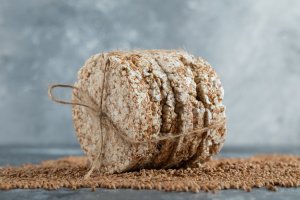With the arrival of autumn, we instinctively reach for sweet and warm things. Fragrant teas with a spoonful of fragrant jam appear on our tables more and more often. This traditional delicacy warms us on cool evenings and gives us memories of a warm summer.
Many people consider jam to be a healthy alternative to other sweets. Indeed, berries and fruits are a storehouse of vitamins. However, long-term heat treatment during cooking significantly reduces their amount. In addition, the high sugar content makes jam far from a dietary product. So, can jam be called healthy? Rather, it is a compromise option for those who are not ready to completely give up sweets.
Are vitamins preserved in jam?
The duration of heat treatment is inversely proportional to the preservation of vitamins in food. This universal rule applies to all culinary processes. However, some nutrients demonstrate relative resistance to high temperatures.
The coarse fibers of fruits and berries are practically not changed during the preparation of jam. These components promote healthy digestion, have a positive effect on intestinal microflora and stimulate peristalsis.
Apricot, quince, apple and pumpkin jams are rich in fiber. It is important to note that most of the fiber is concentrated in the peel of the fruit, so for maximum benefit it is recommended to preserve it when cooking.
Vitamins B, A and E are relatively resistant to heat. Although long cooking leads to partial decomposition of these vitamins, a certain amount of them is preserved in the finished product. Vitamin C, on the contrary, is almost completely destroyed at high temperatures.
Raspberry jam retains salicylic acid, which has an antipyretic effect and is part of many medications. However, its concentration in jam is significantly lower than in medical preparations.
Currant jam is the leader in terms of fruit acid content. Although currants are rich in vitamin C, its amount is significantly reduced when boiled.
Cherry jam contains vitamins A, E, B2, fruit acids, iron, potassium and copper.
Walnut jam, even after heat treatment, retains antioxidants, omega-3 fatty acids, fiber and some essential oils.
Benefits of jam
For the female body. You can include jam from fruits and berries with a high iron content (for example, cherry or sweet cherry) in your diet. Sea buckthorn jam is also an excellent choice, as it preserves microelements with anti-inflammatory properties and has a beneficial effect on the skin. In general, the less sugar the jam contains, the healthier it is.
For the male body. Jams rich in magnesium, potassium and other microelements important for the normal functioning of the cardiovascular system are recommended. For example, apricot jam. Men who are actively involved in sports or physical labor are permitted to consume jam in moderation to replenish energy expenditure.
The benefits of jam in baby nutrition
When discussing the benefits of jam, it should be remembered that it is, first of all, a dessert. Although it may be less harmful in composition compared to candies or cakes, it is still a product with a high sugar content. Even jam prepared in a “cold” way contains a lot of sugar, so you should not abuse it. However, adding berries mashed with sugar to natural cottage cheese or yogurt is a healthier alternative.
Active children without excess weight can include jam in their diet. However, it is important to remember that this is a full-fledged dessert, and a portion of 2-3 tablespoons is quite enough.
For whom is jam contraindicated?
People with diabetes, obesity and allergies to berries or fruits should limit or completely exclude jam from their diet.
Resource: rskrf.ru
Also read:













